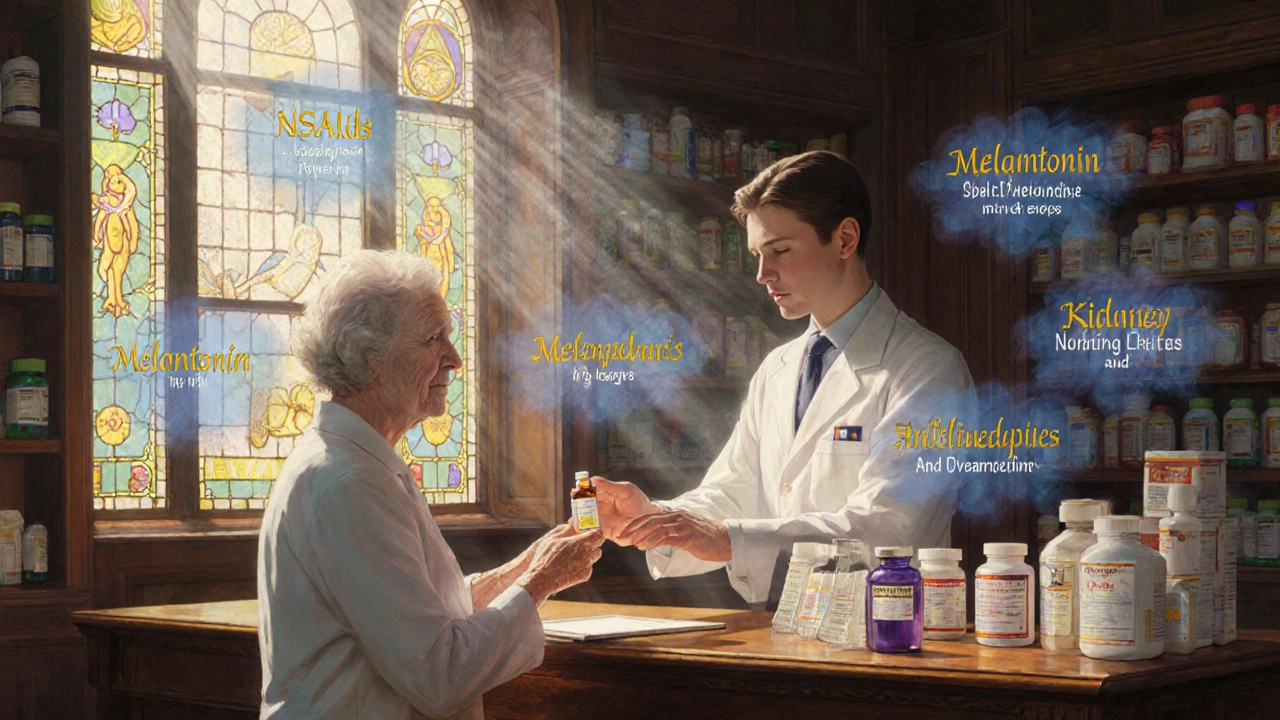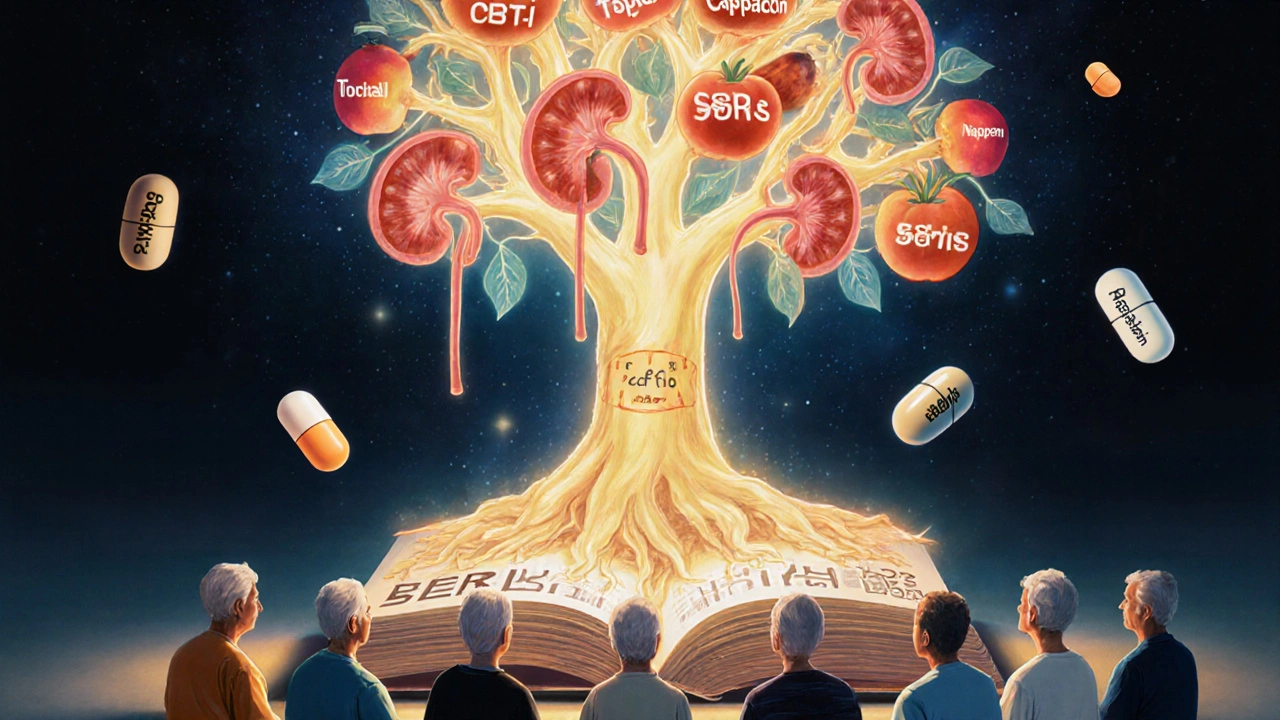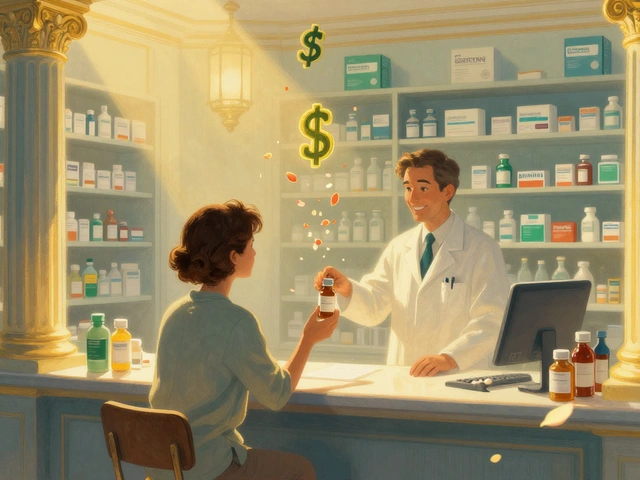Every year, thousands of seniors end up in the hospital not because of a fall or a heart attack, but because of a medication they were prescribed. It’s not always a mistake - sometimes, it’s just that the drug was never meant for someone their age. That’s where the Beers Criteria comes in. Developed by the American Geriatrics Society and updated every three years, it’s the most trusted guide in the U.S. for spotting medications that do more harm than good in adults 65 and older. This isn’t just a list of bad drugs - it’s a practical tool used by doctors, pharmacists, and care teams to keep older adults safe.
What Exactly Is the Beers Criteria?
The Beers Criteria isn’t a suggestion. It’s a living, evidence-based standard. First created in 1991 by Dr. Mark Beers, it was adopted by the American Geriatrics Society in 2011 and has been refined with new research ever since. The latest version, released in May 2023, is based on over 7,300 high-quality studies - a 22% increase from the previous update. It’s now used in nearly 9 out of 10 U.S. healthcare systems, especially in Medicare Part D programs, where it’s required for patients taking eight or more medications.
It’s not about banning drugs. It’s about recognizing when the risks outweigh the benefits. For example, a drug that works fine for a 40-year-old might cause confusion, falls, or kidney damage in a 75-year-old. The Beers Criteria flags these situations so providers can step in before harm happens.
The Five Categories of Risk
The 2023 Beers Criteria breaks down risky medications into five clear groups. Each one helps clinicians make smarter choices.
- Medications to avoid entirely - These are drugs with strong evidence of harm in older adults. First-generation antihistamines like diphenhydramine (Benadryl) and hydroxyzine are on this list. They’re often sold as sleep aids or allergy meds, but they block acetylcholine in the brain - leading to memory problems, dry mouth, constipation, and even delirium. The evidence is so clear that the AGS gives them a strong recommendation against use.
- Medications dangerous with certain conditions - Some drugs are fine for most people but risky if you have heart failure, kidney disease, or dementia. NSAIDs like ibuprofen and naproxen, for example, can worsen heart failure and raise blood pressure. They’re also linked to stomach bleeding, especially in seniors on blood thinners.
- Medications to use with caution - These aren’t banned, but they need extra care. Dabigatran (Pradaxa), a blood thinner, increases bleeding risk in people over 75 or with poor kidney function. Gabapentin, often prescribed for nerve pain, builds up in the body if kidneys aren’t working well - leading to dizziness and falls. Dose adjustments are critical.
- Harmful drug combinations - Mixing medications can be deadly. Combining anticholinergics (like oxybutynin for overactive bladder) with opioids (like oxycodone) can cause severe constipation, urinary retention, and mental confusion. These interactions are often missed because each drug seems fine on its own.
- Drugs needing kidney-based dosing - As we age, kidneys slow down. Many drugs are cleared through the kidneys, so standard doses become toxic. The Beers Criteria now includes specific dose limits for 68% of these medications, with plans to cover 100% by 2026. If a senior’s creatinine clearance is below 30 mL/min, their meds need to be adjusted - or changed.
The 2023 update added 32 new medications to the list and removed 18 that were no longer considered risky. That’s how it stays current - not by guesswork, but by science.
Why It Matters: The Real-World Impact
Seniors make up just 13.5% of the U.S. population but take 34% of all prescription drugs. About 23% of older adults living at home are on at least one medication flagged by the Beers Criteria. And it’s not just discomfort - it’s hospitalization. Studies show that inappropriate prescribing contributes to 15% of all hospital admissions among seniors.
When healthcare teams use the Beers Criteria properly, the results are dramatic. One study found a 28% drop in adverse drug events - like falls, confusion, or internal bleeding - after clinics started using the guidelines. In one clinic, benzodiazepine prescriptions for insomnia dropped by 43% in patients over 75 after EHR alerts were turned on.
But it’s not perfect. Some doctors complain about “alert fatigue.” If an electronic health record pops up 12 Beers Criteria warnings during a single visit, it’s easy to ignore them all. And sometimes, the criteria flag a drug that’s actually needed - like antipsychotics for severe dementia-related aggression. The guidelines don’t replace clinical judgment; they support it.

What’s Being Done Instead?
The 2025 update to the Beers Criteria includes something new: a list of alternatives. For every flagged drug, there’s now a recommendation for what to use instead.
- Instead of diphenhydramine for sleep: Cognitive behavioral therapy for insomnia (CBT-I), melatonin, or low-dose trazodone.
- Instead of NSAIDs for arthritis pain: Physical therapy, acetaminophen (within safe limits), or topical capsaicin.
- Instead of benzodiazepines for anxiety: Mindfulness, exercise, or selective serotonin reuptake inhibitors (SSRIs) like sertraline.
These aren’t just guesses. They’re backed by clinical trials. The American Geriatrics Society now recommends non-drug options first - because they’re safer and often more effective long-term.
Who Uses It - and Who Doesn’t?
Pharmacists are the biggest fans. Nearly 9 out of 10 say the Beers Criteria helps them catch dangerous prescriptions during medication reviews. Geriatricians use it daily. But primary care doctors? Only 41% consistently apply it, according to CDC data.
Why the gap? Time. Training. Technology. Many clinics don’t have EHR alerts turned on. Others don’t have pharmacists on staff. And some doctors just don’t know the list well enough.
The good news? The American Geriatrics Society offers a free mobile app and pocket guide with quarterly updates. Over 87,000 people have downloaded it. Users report saving over 8 minutes per patient visit - time that can be spent talking to the patient instead of flipping through a manual.

The Big Picture: Cost, Access, and Equity
There’s a dark side to the Beers Criteria that doesn’t get talked about enough. Many seniors can’t afford the safer alternatives. A study found that 25% of Medicare patients skip doses or don’t fill prescriptions because of cost. Sometimes, a cheaper but risky drug is the only option.
And globally, the problem is worse. In low-income countries, 63% of the medications on the Beers List have no affordable replacement. That’s why the World Health Organization calls the criteria “a luxury tool” in some settings - even if it’s the gold standard in the U.S.
The pharmaceutical industry is responding. Over 23 new “senior-friendly” drugs have been developed to replace Beers-listed ones. The market for these medications is expected to hit $84 billion by 2027. But until those drugs are covered by insurance and available everywhere, the Beers Criteria will always be just half the solution.
What Seniors and Families Should Know
If you or a loved one is on multiple medications, ask these questions:
- Is this drug on the Beers Criteria list?
- Is there a safer alternative - even a non-drug one?
- Has my kidney function been checked recently?
- Am I taking any meds that might interact with each other?
Don’t be afraid to ask your pharmacist to review all your meds - including over-the-counter ones. Many don’t realize that Benadryl, sleep aids, and antacids can be just as risky as prescription drugs.
And if your doctor says a flagged drug is necessary, ask why. Is it because nothing else works? Or because it’s easier to prescribe? The Beers Criteria isn’t a rulebook - it’s a conversation starter.
What’s Next for the Beers Criteria?
The 2026 update will expand kidney dosing guidance to cover every medication cleared by the kidneys. The American Geriatrics Society is also partnering with Google Health AI to build predictive tools that flag seniors at highest risk - before they even start a risky drug.
It’s not about eliminating medications. It’s about using them wisely. For older adults, the goal isn’t to take fewer pills - it’s to take the right ones. And with the Beers Criteria, we’re getting better at telling the difference.
What is the Beers Criteria for seniors?
The Beers Criteria is a list of medications that may be unsafe for adults aged 65 and older because the risks outweigh the benefits. Created by the American Geriatrics Society and updated every three years, it helps doctors and pharmacists avoid prescribing drugs that can cause confusion, falls, kidney damage, or dangerous interactions in older adults.
Is Benadryl safe for seniors?
No, Benadryl (diphenhydramine) is flagged in the Beers Criteria as potentially inappropriate for seniors. It’s an anticholinergic drug that can cause drowsiness, confusion, memory problems, dry mouth, constipation, and even delirium. Even low doses can be risky, especially for those with dementia or kidney issues. Safer alternatives include melatonin or cognitive behavioral therapy for sleep.
Why are NSAIDs dangerous for older adults?
NSAIDs like ibuprofen and naproxen increase the risk of stomach bleeding, kidney damage, and worsening heart failure in seniors. They also raise blood pressure and can interact dangerously with blood thinners. For arthritis pain, safer options include acetaminophen (within limits), topical creams, physical therapy, or low-dose corticosteroid injections.
Does Medicare require the Beers Criteria?
Yes. As of 2024, Medicare Part D requires all prescription drug plans to use the Beers Criteria in medication therapy management programs for dual-eligible beneficiaries - people enrolled in both Medicare and Medicaid. This affects over 12 million Americans and ensures that high-risk medications are reviewed regularly.
Can the Beers Criteria be used in palliative care?
Yes, but with caution. The Beers Criteria was designed for general use, not end-of-life care. In palliative settings, medications like antipsychotics or opioids may be needed to manage severe symptoms - even if they’re flagged as inappropriate. The goal shifts from avoiding risk to maximizing comfort. Clinicians should use the criteria as a guide, not a rule, and always consider individual patient goals.
Are there apps or tools to help use the Beers Criteria?
Yes. The American Geriatrics Society offers a free mobile app and pocket guide with the full 2023 list and quarterly updates. The app is used by over 87,000 clinicians and saves an average of 8.2 minutes per patient visit. Many electronic health records, like Epic, also have built-in Beers Criteria alerts that flag risky prescriptions in real time.
How often is the Beers Criteria updated?
The Beers Criteria is updated every three years by an expert panel that reviews hundreds of new studies. The most recent version was published in May 2023, with the next update expected in 2026. Updates add new medications to the list, remove those no longer considered risky, and expand guidance on kidney dosing and drug interactions.







Comments
Alyssa Lopez
11 November 2025Ok so the Beers Criteria is basically the gov't's way of sayin' 'we dont wanna pay for your meds anymore' under the guise of 'safety'. They take away Benadryl, then wonder why old folks are up at 3am wide awake. And dont get me started on the 'alternatives' - CBT-I? Who has time for that? My grandma needs a pill, not a therapist. This is just bureaucratic overreach wrapped in medical jargon.
Alex Ramos
12 November 2025As a geriatric pharmacist for 18 years, I can tell you this list saves lives daily. 🙌 We’ve cut falls by 40% in our clinic since implementing Beers alerts. Diphenhydramine? Gone. NSAIDs? Only with kidney checks. The real issue isn’t the list - it’s that 60% of PCPs still don’t use it. I’ve seen 82-year-olds on 12 meds, 5 of which are Beers-listed. It’s not about restriction - it’s about precision. And yes, the app is free. Use it.
edgar popa
14 November 2025My pops was on benadryl for years. Doc said it was fine. Then he started hallucinating at night. We switched to melatonin and boom - slept like a baby. Thanks for the info, this stuff matters. 🙏
Eve Miller
14 November 2025It is profoundly irresponsible to frame the Beers Criteria as a mere guideline. It is a clinically validated, evidence-based standard that has demonstrably reduced hospitalizations in older adults by 15%. To dismiss it as 'bureaucratic overreach' is not only ignorant - it is dangerous. The data is not opinion. The outcomes are not anecdotal. If you are advocating for continued use of anticholinergics in the elderly, you are not a patient advocate - you are a liability.
Chrisna Bronkhorst
14 November 2025The Beers list is a joke. They remove ibuprofen but give you acetaminophen which kills more people from liver failure than NSAIDs do from GI bleeds. The real problem is the healthcare system doesn't care about outcomes - only compliance. They want you to check a box not save a life. Also kidney dosing? Most seniors don't even get creatinine checked. This is theater.
Amie Wilde
16 November 2025My aunt’s pharmacist caught 4 Beers-listed meds during a med review. One was a sleep aid she’d been taking since 2005. She cried when she found out it was making her confused. Now she’s sleeping better, clearer, and not falling. I’m just glad someone was paying attention.
Gary Hattis
16 November 2025Look, I’m from South Africa and we don’t have access to 80% of these alternatives. In Cape Town, my cousin’s mom is on diphenhydramine because melatonin costs $40 a month and her pension is $80. The Beers Criteria is brilliant - but only if you live in a country with universal healthcare and drug subsidies. Calling it a 'gold standard' while ignoring global inequity is like praising a Ferrari while people are walking barefoot. This isn’t just medical - it’s political.
Renee Ruth
18 November 2025Oh my god. I knew this was coming. The Beers Criteria is just the first step. Next they’ll ban all antidepressants for seniors because they 'might cause falls.' Then they’ll say 'why are you even alive if you can’t walk without help?' This is eugenics dressed in white coats. They don’t care about safety - they care about cost. And soon, they’ll tell us which drugs we’re 'allowed' to die with.
Samantha Wade
18 November 2025I want to thank the author for this comprehensive, meticulously researched piece. The Beers Criteria is not a limitation - it is liberation. Liberation from iatrogenic harm, from polypharmacy-induced frailty, from the illusion that 'more drugs = better care.' The inclusion of non-pharmacological alternatives is revolutionary. We must advocate for equitable access to these alternatives - not just in the U.S., but globally. This is public health at its most ethical. Let’s not let cost or convenience dilute its impact.
Elizabeth Buján
19 November 2025I used to think meds were the answer - until I saw my dad spiral after being on 7 different pills for 3 years. One was for anxiety, one for sleep, one for heartburn, one for pain, one for 'brain fog' (which was just the other meds), and two for side effects of the others. We switched to walking every morning, a little tai chi, and cutting out the Benadryl. He hasn’t been so present since he was 60. It’s not about fewer pills - it’s about more life. The Beers Criteria isn’t telling us what to stop - it’s telling us what to start.
Andrew Forthmuller
20 November 2025Wait so if gabapentin is risky for bad kidneys - what’s the alternative? I read the article but didn’t see one. Also is tramadol on the list? I think it is but not sure.
vanessa k
22 November 2025My mom’s doctor didn’t even know about the Beers list. She was on oxybutynin and oxycodone together. I found out by accident. I cried for hours. We got her off both. She’s not perfect now - but she’s not confused all day either. I’m so glad someone wrote this. Please keep sharing stuff like this.
manish kumar
23 November 2025As someone from India, I see this every day. In rural clinics, we give elderly patients antihistamines for colds because they’re cheap and available. No one checks kidney function. No one knows about Beers. Even in cities, doctors prescribe benzodiazepines like candy. The problem isn’t just the list - it’s the lack of training, the lack of pharmacists, the lack of awareness. We need a Beers-like tool adapted for low-resource settings - not just copied. The WHO is right: this is a luxury in many places. But it doesn’t have to be. We can build simple, low-tech versions - printed cards, SMS alerts, community health worker checklists. The science is there. The will? Not yet.